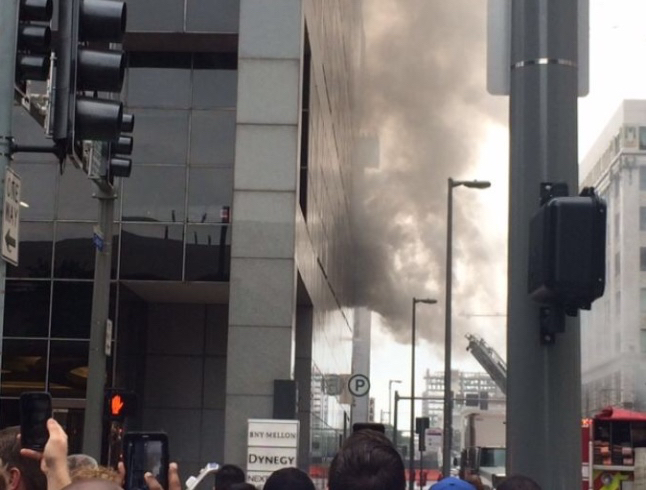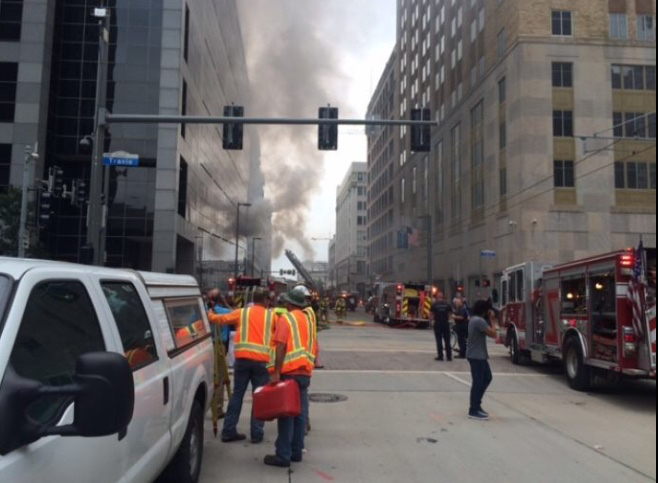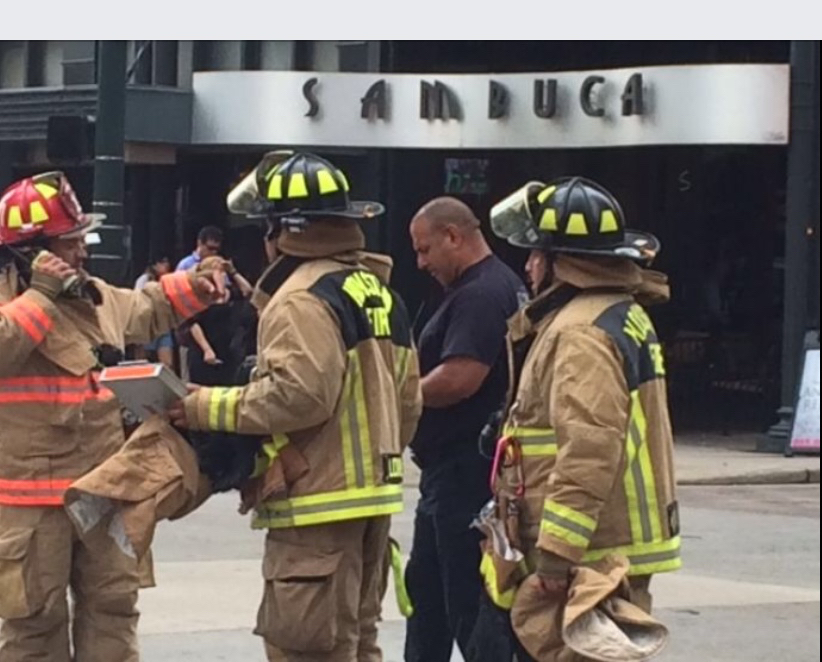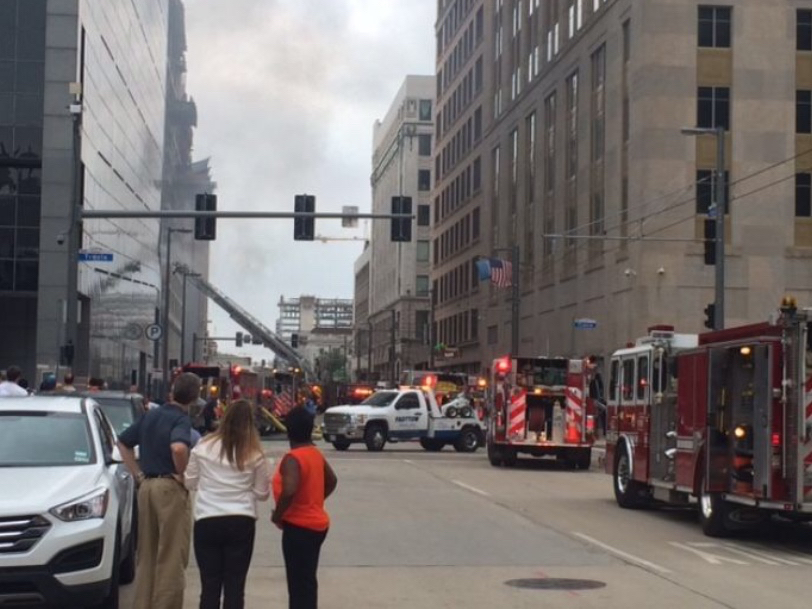Smoke, Sirens, and Shock: Witnessing the Downtown Houston Garage Inferno
It started like any other weekday morning in Downtown Houston. I was grabbing coffee from a food truck near Travis Street, mentally preparing for a day of emails and existential dread, when I noticed something strange—an acrid smell in the air, sharp and metallic, like burning rubber mixed with panic.
Then I saw the smoke.
Thick, black plumes were rising from a parking garage just a few blocks away. At first, I thought it was a car overheating. Houston summers are brutal, after all. But within minutes, the smoke intensified, curling into the sky like a signal flare from hell. People began to gather, phones out, murmuring, pointing. And then came the sirens.

🚨 The Chaos Unfolds
Houston Fire Department trucks roared onto the scene, lights flashing, horns blaring. Firefighters jumped out with the kind of urgency that makes your heart race even if you’re just watching. I followed the crowd toward the garage, staying a safe distance back but close enough to feel the heat radiating from the structure.
The fire had spread fast—dozens of vehicles were engulfed. You could hear tires popping, glass shattering, and the occasional terrifying boom that made everyone flinch. One firefighter shouted for backup. Another was already dragging hoses toward the blaze. It was surreal, like watching a disaster movie unfold in real time.
🚗 A Wall of Flame and Metal
The garage was a multi-level structure, and the fire had taken over the lower floors first. Flames licked up the concrete pillars, dancing across parked cars like they were kindling. I saw a sedan melt into a puddle of metal. A pickup truck exploded in a burst of sparks. The heat was so intense, it felt like standing next to an open oven—if that oven was trying to kill you.
People who had parked there earlier in the morning were frantically trying to remember where they’d left their cars. One woman sobbed into her phone. A man in a suit cursed under his breath and muttered something about insurance. We were all helpless spectators, watching the fire consume steel and rubber like it was hungry for more.
🔥 The Response
The firefighters were relentless. They attacked the blaze from multiple angles, climbing ladders, breaking windows, and dousing flames with industrial-strength hoses. The smoke made it hard to see, but you could hear their commands, their coordination, their sheer determination.
Eventually, after what felt like hours but was probably closer to 45 minutes, the fire began to die down. The smoke thinned. The flames retreated. What remained was a charred skeleton of a garage—and about 30 destroyed vehicles.
Miraculously, no injuries were reported. The fire had started early enough that the garage was mostly empty of people, and the emergency response was fast and efficient. Arson investigators arrived soon after, interviewing witnesses and trying to piece together what had happened. The cause? Still unknown.
🧠 Processing the Aftermath
As the crowd dispersed and the adrenaline wore off, I stood there staring at the wreckage. It was hard to believe that just an hour earlier, this had been a normal parking garage. Now it looked like a war zone.
I walked back to my office, still smelling like smoke, still shaken. The images stuck with me—the flames, the firefighters, the stunned faces of commuters. It was a reminder of how quickly things can change. How fragile our routines really are.
And how grateful I am for the men and women who run toward danger while the rest of us run away.









